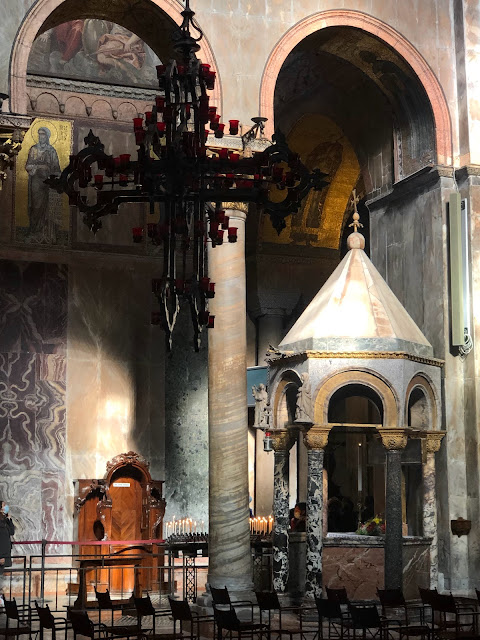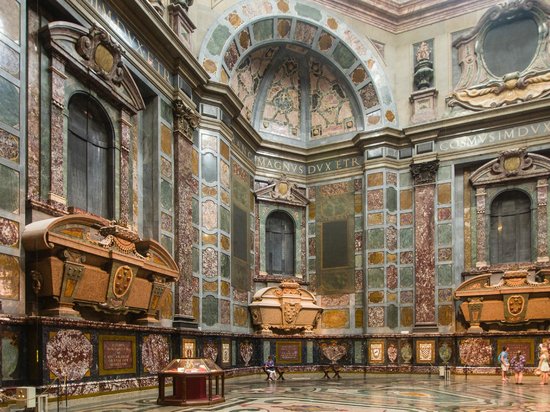So first off, what is a "revetment" you might ask? Simply put, in an architectural context a revetment is a decorative stone facing that is placed over some less ornamental material such as brick or what not. When one walks through Rome today and looks at the imperial era ruins, frequently these buildings have been stripped of their marble revetments, leaving only the underlying brick structure visible. It has been said that while Julius Caesar established the "Rome" that we think of today as the heart of an empire, it was his successor, the Emperor Augustus, who 'clothed' that same city in marble and turned it into a truly imperial city in character. This image of marble as a kind of 'clothing' is a very apt description for our purposes today, for that is indeed what we are talking about: the decorative use of marbles and granites for the purpose of beautification.
Commonly what one saw in these revetments was the use of multiple colours of stone set into geometric patterns. The net result of this approach is, to my mind, very indicative of principles much spoken of in the twentieth century like noble beauty and noble simplicity -- for what material can be anymore 'noble' and beautiful than marble, a material at once simple as well as ornamental in its character.
The use of marbles in this way is one of those elements that connects Christendom with the classical world -- quite literally in this instance as many of these marble revetments were created from repurposed, antique marbles -- or what we call "spoila" -- for in ancient Rome any important building would have been so clothed, just as the most important churches of Christendom would come also to be.
It is probably worth noting that these marble revetments might be found either on the interior or exteriors of buildings and a good example of a basilica that uses both would be that of San Marco in Venice.
 |
| Detail of Exterior, San Marco, Venice |
 |
| Decorative marbles seen on the "trophy wall" of the south facade of San Marco, Venice. |
 |
| Detail of Interior, San Marco, Venice |
 |
| Detail of Interior, San Marco, Venice |
| Detail of a balustrade that utilizes cosmatesque ornament as a detail and as an accent to the red, white and green marbles and granite revetments. |
,_2.jpeg) |
| An ambo comprised of various coloured stonework as well as cosmatesque ornament |
Of course, if you want to see the marble revetments of ancient Rome itself in tact, one need only turn to the Pantheon where it is still spectacularly on display:
 |
| Hagia Sophia, Constantinople (Istanbul) |
 |
| Hagia Sophia, Constantinople (Istanbul) |
 |
| Detail of one of the walls of Hagia Sophia |





















